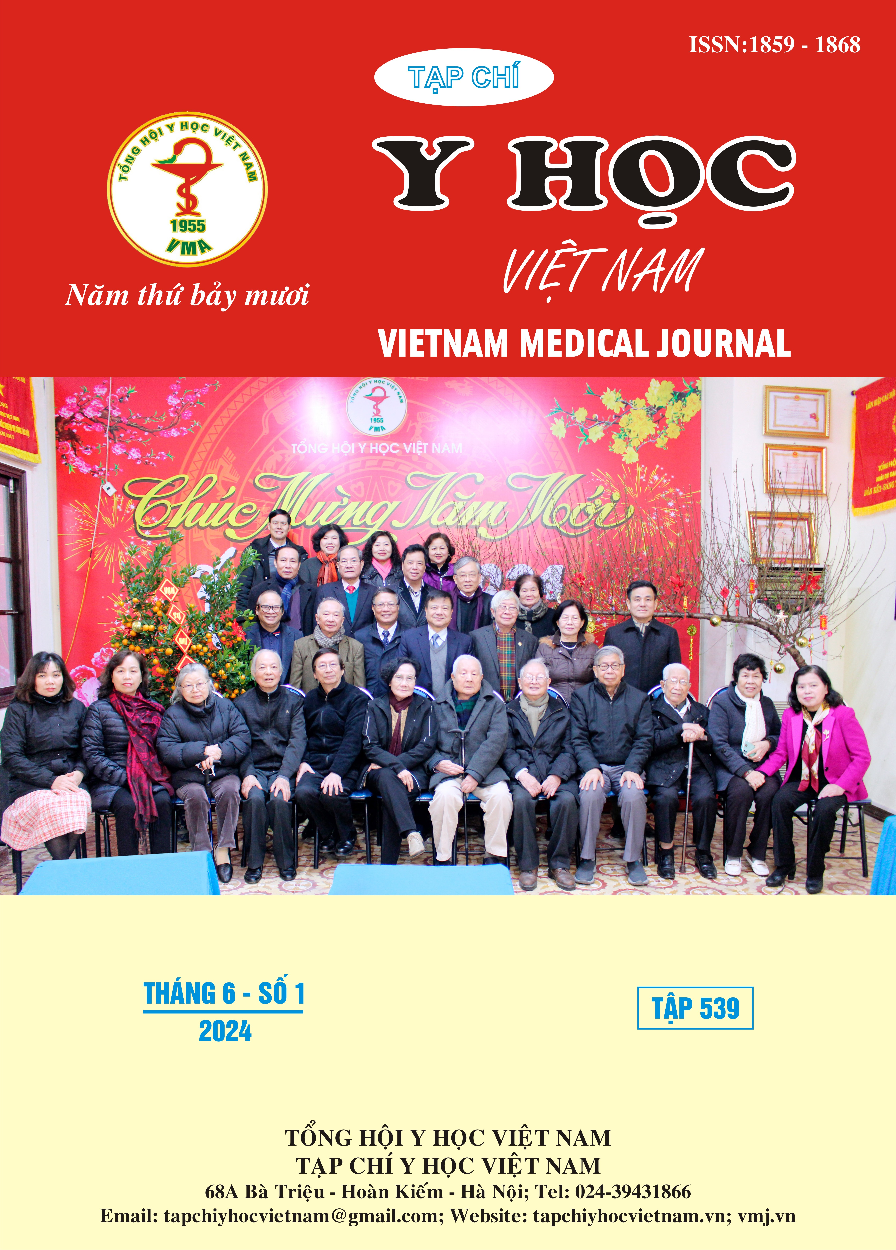COST-CONSEQUENCE ANALYSIS OF CEFTAROLINE IN THE TREATMENT OF COMPLICATED SKIN AND SOFT TISSUE INFECTIONS IN ADULTS IN VIETNAM
Main Article Content
Abstract
Objectives: Analyzing the costs and consequences associated with treating complicated skin and soft tissue infections in adult patients using Ceftaroline in comparison to empirically prescribed antibiotics during hospitalization in Vietnam. Materials and Methodology: The decision tree model was applied for cost-consequence analysis. adopting the perspective of Health Insurance. The analysis duration extended from the day of inpatient admission to the hospital until the discharge date. Results and Discussions: Results of the cost-consequence analysis showed that the overall clinical cure rate for patients initiating treatments with Ceftaroline and comparators were similar (ranging from 95% to 99%). The average total costs per patient varied significantly (Ceftaroline is approximately 3.5 million higher than Vancomycin + Carbapenem and but 4 - 9 million lower than other newer antibiotics). From the payer's perspective, initiating treatment with Ceftaroline increases the clinical cure rate and increases the average total treatment cost compared to Vancomycin + Carbapenem and Clindamycin + Carbapenem; Ceftaroline is superior to Tigecycline; providing cost-savings but slightly reducing the clinical cure rate compared to Linezolid + Carbapenem. The key factors that influence the difference in costs and outcomes are the duration of treatment with Ceftaroline and the comparative antibiotic for costs, and the clinical cure rate when initiating with Ceftaroline for outcomes. Probabilistic sensitivity analysis also indicates the probability of cost savings with Ceftaroline compared to using Vancomycin 1g q12h + Carbapenem 500mg q8h, Linezolid 600mg q12h + Carbapenem 500mg q8h, Clindamycin 600mg q8h + Carbapenem 500mg q8h, Tigecyclin 50mg q12h are 23.4%, 85.9%, 14.5% and 73.3% respectively. Conclusion: Ceftaroline is a potential new antibiotic in the treatment of skin and soft tissue infections with greater effectiveness than commonly used antibiotics. The added cost of Ceftaroline needs to be considered in the context of increasing antibiotic resistance rate and the need to ensure the availability of antibiotics in the medicine lists.
Article Details
Keywords
cost-consequence analysis, Ceftaroline, complicated skin and soft tissue infections, adults, Vietnam
References
2. Bassetti M, Baguneid M, Bouza E, Dryden M, Nathwani D, Wilcox M. European perspective and update on the management of complicated skin and soft tissue infections due to methicillin-resistant Staphylococcus aureus after more than 10 years of experience with linezolid. Clinical Microbiology and Infection. 2014;20(S4):3–18.
3. Corey GR, Wilcox M, Talbot GH, Friedland HD, Baculik T, Witherell GW, et al. Integrated analysis of CANVAS 1 and 2: Phase 3, multicenter, randomized, double-blind studies to evaluate the safety and efficacy of ceftaroline versus vancomycin plus aztreonam in complicated skin and skin-structure infection. Clinical Infectious Diseases. 2010;51(6):641–50.
4. Pfizer. Tờ hướng dẫn sử dụng thuốc Zinforo.
5. Torres A, Soriano A, Rivolo S, Remak E, Peral C, Kantecki M, et al. Ceftaroline Fosamil for the Empiric Treatment of Hospitalized Adults with cSSTI: An Economic Analysis from the Perspective of the Spanish National Health System. ClinicoEconomics and Outcomes Research. 2022;14(March):149–61.
6. Karve S, Hackett J, Levinson J, Gibson E, Battersby A. Ceftaroline fosamil treatment outcomes compared with standard of care among hospitalized patients with complicated skin and soft tissue infections. J Comp Eff Res. 2016;5(4):393–405.
7. Nga TTT. Kết quả khảo sát nồng độ ức chế tối thiểu của vancomycin trên 100 chủng staphylococcus aureus được phân lập tại BV Chợ Rẫy từ tháng 5-8/2008. Tạp Chí Y Hoc TP HCM, tập 13, phụ bản của số 1 tr 295-299. 2009;


